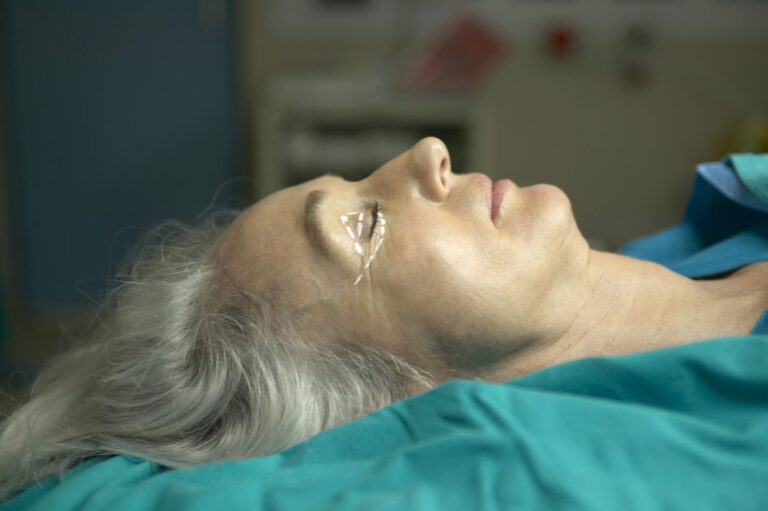Blepharoplasty, also known as blepharoplasty, is a surgical procedure to improve the appearance of the eyelids. Eyelid skin is thinner than other areas of the face and tends to show the first signs of aging. Drooping or drooping eyelids can affect peripheral vision and make daily activities more difficult.
Blepharoplasty removes excess skin and fat and tightens the muscles and tissues of the eyelid. Reduces skin falling into the field of view to improve peripheral vision.
Types of Blepharoplasty
There are two types of blepharoplasty: functional and aesthetic.
Functional Blepharoplasty
A functional blepharoplasty removes excess skin that obscures your field of vision. If the procedure is deemed medically necessary, it may be covered by medical insurance. Testing your visual field with a Humphrey visual field analyzer will determine how much vision is affected.
Aesthetic Blepharoplasty
Aesthetic blepharoplasty can be done on either the upper or lower eyelid or both. Depending on the type of lower eyelid blepharoplasty, either excess skin on the lower eyelid is removed, or redistribution or removal of excess fat.
You should have realistic expectations before undergoing blepharoplasty. Although the procedure can improve the appearance of your eyelids, it does not dramatically change your face.
Click Play to learn all about Eyelid Surgery
Candidates for Blepharoplasty
If you are considering blepharoplasty, you should be in good general health and not smoke, have no serious eye conditions, and have no unhealthy facial tissues and muscles.
How to fix hooded eyes
Not everyone is a good candidate for blepharoplasty, but there are other ways to improve the appearance of hooded eyes:
- Botox injections can help lift the brow, improving the appearance of hooded eyes.
- Dermal fillers can help lift the brow and tighten the skin around the eye.
- The prescription eye drops UPNEEQ (oxymetazoline hydrochloride ophthalmic solution) can help lift drooping eyelids.
- Radio frequency The treatments use electromagnetic current to tighten the skin and lift the eyebrows.
- Thread lifts they are temporary stitches that raise the eyebrows slightly.
Procedure
Blepharoplasty is usually performed on an outpatient basis and requires local anesthesia and sedation. The procedure can take anywhere from 30 to 60 minutes, depending on whether you have the procedure on both the upper and lower eyelids.
If your upper eyelids are operated on, the incision lines are usually made along the natural crease lines of your eyelids. Once the incisions are made, fat deposits and excess skin are removed. A strip of the orbicularis oculi muscle that surrounds the eyelids may also be removed to deepen the eyelid crease.
If you have lower eyelid surgery, an incision may be made either just below the lower lash line or inside the lower eyelid. Depending on the method, excess skin on the lower eyelid is removed or fat is redistributed or removed.
After the procedure, your incisions are closed with either removable stitches, skin glues, or surgical tape.
Recovery
After blepharoplasty, you will be given specific instructions, including what medications to apply or take by mouth, and a date and time when you should see your surgeon for a further examination. Your healthcare provider will also let you know about any symptoms or signs to look out for, which means you’ll need to attend sooner.
Pharmaceutical
You may experience some swelling, bruising, irritation or dry eyes, but if these symptoms occur, they are generally very mild. Most of the swelling subsides within two weeks. You will not be able to wear contact lenses or eye makeup for two weeks after surgery.
Your stitches will usually be removed on the third or fourth day after surgery. It may be advisable to wear dark sunglasses for the next two weeks to protect your eyes from the sun and wind. You can return to work in a few days to a week, but you will need to avoid exercise and strenuous activities for at least two weeks.
Potential risks
Blepharoplasty is usually very well tolerated. After surgery, there may be swelling and bruising around the surgical site. This will eventually go away on its own.
Complications are uncommon but may include infection, granuloma, reaction to anesthesia, and double or blurred vision. Your eyes may experience irritation and dryness due to a temporary change in tear distribution.
Although rare, another potential risk is retrobulbar hematoma, a collection of blood behind the eyeball. This condition is considered a medical emergency as it can lead to blindness if left untreated.
Your scars from a blepharoplasty will usually be well hidden and will fade over time. Be sure to talk to your healthcare provider about any concerns related to your specific symptoms and any complications that may arise.
Summary
Blepharoplasty is a surgical procedure used to improve the appearance of the eyelids. Drooping eyelids can be treated using this vision-improving procedure, which can be life-changing.
A word from Verywell
If your eyelids droop or distort your vision, seek a consultation with your eye doctor to see if blepharoplasty is an option. While every procedure has risks, blepharoplasty is generally well tolerated and can dramatically improve vision.



:max_bytes(150000):strip_icc()/BlyssProfile-8eef1b984194469a87c03ff9afebb449.jpg)